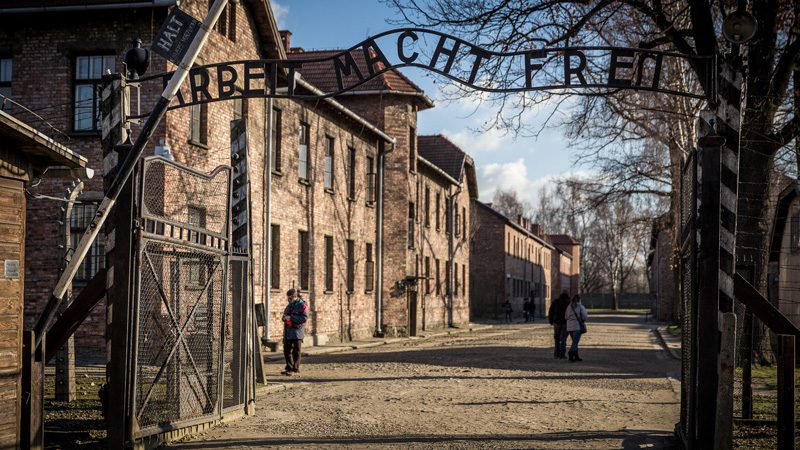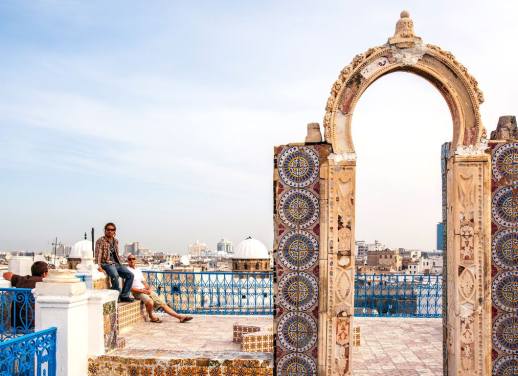A couple of years ago, my girlfriend and I were hostelling our way through central Europe. We’d made it to Berlin, which is a little like those crossroads in movies, the ones with a dozen signs pointing in every possible direction.
There were too many choices as to what to do next. We could head north into Denmark, west to the Netherlands and Belgium, or south into the Czech Republic.
“What about Poland?” my girlfriend said. “We could see Auschwitz.”
The drive from Krakow
A couple of days later I was bouncing along in a small bus through the green lanes of southern Poland, just outside Krakow. The driver didn’t speak any English, nor did the other four sullen Poles on board. When we mentioned the word Auschwitz the driver just grunted and gestured to the seats.
The drive from Krakow to the old camp doesn’t take long. After thirty minutes we stopped on a road like any other road. A few of us got off and the bus rumbled away. Opposite was a shady boulevard lined with birch and oak trees. Glance up and you could just make out the red bricks and roofs of Auschwitz I, the original camp built by Polish political prisoners in the early 1940s.
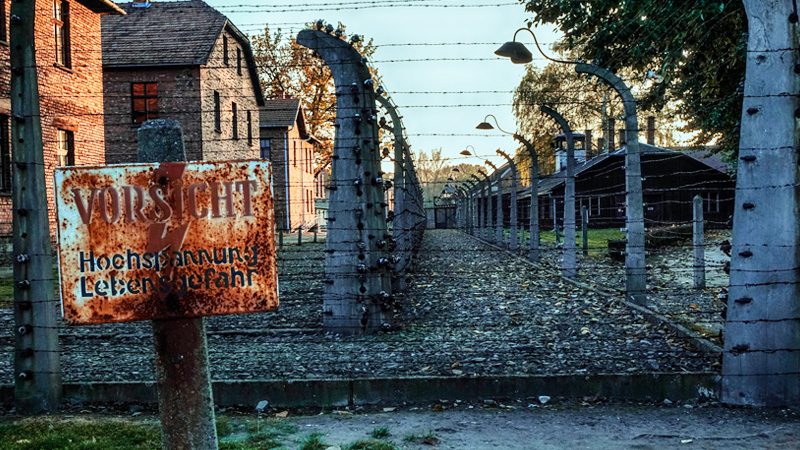
Auschwitz I. Image Thomas Hee, Flickr
Auschwitz I
On busy days, over 30,000 tourists will walk through the grounds of Auschwitz. Dozens and dozens of tours run simultaneously through the old camp and Birkenau, a few minutes down the road. As such, they run a pretty efficient ship. When you arrive you sign up for a tour time and are equipped with a pass, headset and radio. Your guide has a microphone and a transmitter, so all you need to do is tune in to their frequency. You begin where so many prisoners once did, beneath the rusted metal words “Arbeit macht frei” (work makes you free).
The next few hours are hard to describe. Your guide leads you through the avenues and neat brick houses of Auschwitz I. There are bare dormitories, old corridors, chilly parade grounds and – everywhere – double lines of razor wire poles, each equally spaced from its neighbour, and arched in a candy cane curve.
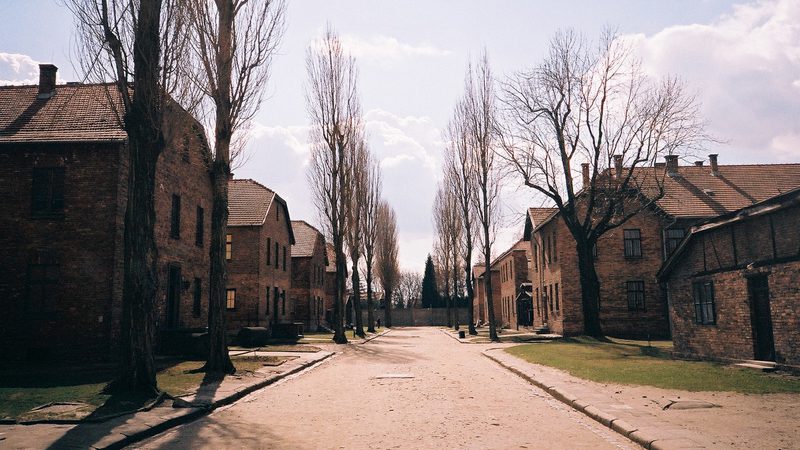
Image c/o Monica Kelly, Flickr
In every room, rows and rows of faces stare out from the walls: old prisoner profiles in black and white. Most look blank and empty; they portray nothing. But studying them is worth the price of admission alone. You could look at the eyes for hours, searching for a glimmer of hope, a pang of fear or a hint of determination. You can’t help but wonder what they were thinking.
Your guide says, “Three weeks after these were taken, all these people were dead.”
Every piece of the place has a story attached. Here a room, three feet by three feet, where four men were made to stand in the dark until they died. There the square outside notorious Block 11, the prison within a prison, where inmates were routinely executed against a brick wall. The house of the camp commandant, Rudolf Hoss, and the gallows where he was executed by the Allies in 1947. The gas chambers, the piles of hair, glasses, shoes… children’s toys.
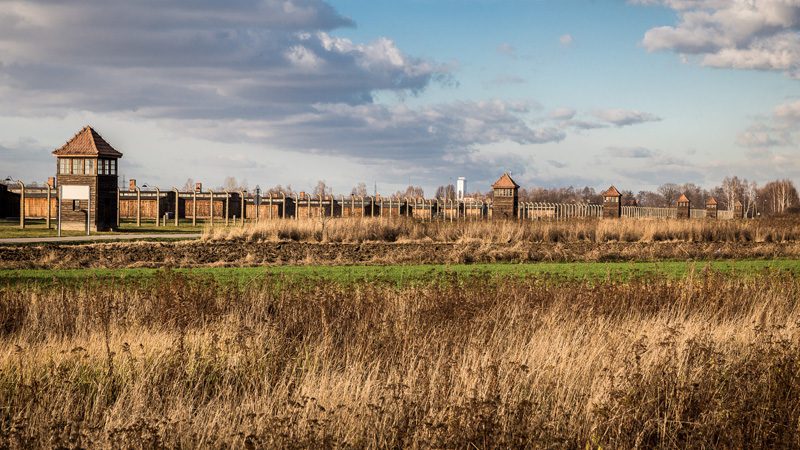
The fields of Birkenau. Image Mattia Panciroli, Flickr
Birkenau
Tourism in Auschwitz has attracted some criticism in recent years (the alleged ‘death tourism’) but I don’t really buy into it. You can criticise the actions of individuals, sure, but I think educating and illuminating future generations on one of the darkest times in human history can only be a good thing. Just like Winston Churchill said: “Those who do not learn from history are doomed to repeat it.”
After the original camp, the tour moves to Birkenau, which is an experience in itself. The close streets and heaviness of Auschwitz I are replaced by acres of grass, clear skies and two parallel railway tracks that come to an ominous, and very final, stop. There’s a warped tranquillity in Birkenau. Yellow wildflowers grow beneath the guard towers. You can see nearby villages and rolling hills. There’s the warble of distant birdsong. It’s hard to imagine that up to 20,000 people per day were killed and burned here. Apparently the nearby residents, the ones who hadn’t been rounded up in the first few years of Nazi occupation, could see and smell the smoke for miles. They slept with the distant glow of the ovens outside their window.
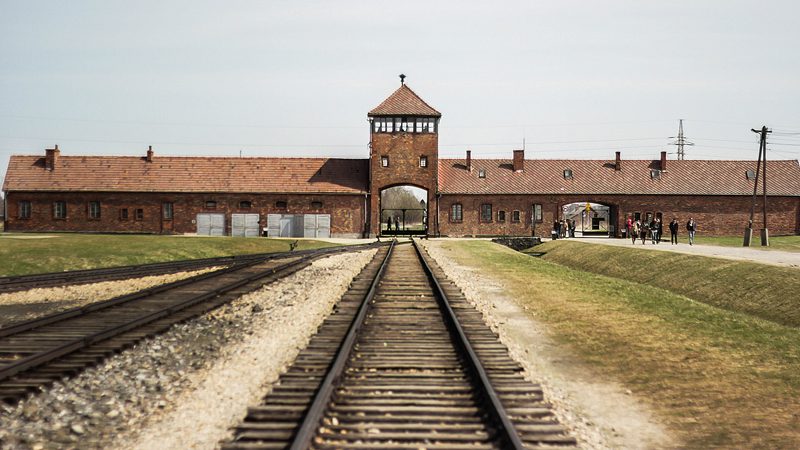
Image c/o Nick Perrone, Flickr
A visit to Auchwitz is the difference between reading the music and hearing it played. You can read about the horrors that happened there, watch documentaries that give you all the facts, but until you stand in the gas chambers, hear the eerie silence around the ash pools of Birkenau and see the dusty wooden bunks where prisoners would huddle together – you won’t understand it.
At the end of the tour you’re left standing outside the red brick main entrance to Birkenau. I remember thinking how quiet the place was. Even with so many people in it. there was so much silence in that place.
Travellers can visit Auschwitz on some of our trips through Poland. All entry fees to the World Heritage Site go towards preserving the camp for future generations.
Feature image c/o Matti Panciroli, Flickr

